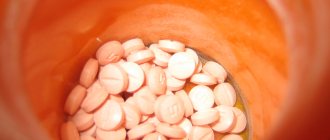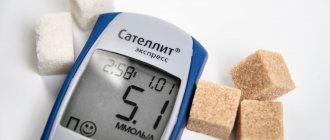Sweet sun pumpkin rightfully occupies a leading position in the list of the healthiest and most delicious vegetable crops. The aromatic juicy pulp, tasty seeds and even the peel are used not only in cooking to prepare tasty and healthy dishes, but also in the field of traditional and alternative medicine for the production of medications and home remedies.
The benefits of pumpkin for the human body in case of diabetes are also obvious. It is no secret that making an appropriate diagnosis requires the patient to comply with certain food restrictions and nutritional rules.
And it is a rational menu that is the main aspect of successful recovery and well-being. Consuming a number of dishes and medicinal products from pumpkin by a diabetic will help normalize the sugar level in the patient’s hemolymph and prevent its sudden surges.
Also, eating this low-calorie vegetable helps to reduce excess body weight, which is very important against the background of impaired pancreatic activity. Let's talk in more detail about which pumpkin recipes are useful for diabetes.
Sweet pumpkin, called the sun vegetable, is the true queen of the vegetable kingdom.
Benefits and composition of pumpkin
The chemical composition of pumpkin provides this vegetable crop with a combination of unique beneficial properties that promote health and eliminate various types of diseases. Despite the fact that pumpkin belongs to the category of foods with a high glycemic index, it can also be consumed if you have diabetes, but in moderation and only after consultation with your doctor.
It should be noted that regular consumption of pumpkin dishes and products helps stimulate regenerative processes in the tissues of the damaged pancreas, as well as restore and normalize the performance of this organ. An important factor is that dishes prepared on the basis of aromatic and juicy pulp contribute to weight loss and improvement of metabolic processes.
As if it had absorbed the rays of the summer sun, pumpkin is a source of a lot of useful vitamins and microelements, the deficiency of which leads to the development of various diseases.
The main elements of the chemical composition of a vegetable crop and its beneficial properties include:
| Names of important vitamins and microelements. | Useful and medicinal properties of vegetables. |
| B vitamins. | Saturates the body with essential vitamin complexes and dietary fiber, which help improve digestion processes. |
| Vitamin A. | Helps increase elasticity and strengthen vascular and venous walls, prevents diseases caused by disturbances in the circulatory system. |
| Cellulose. | Promotes the removal of harmful cholesterol from the body and prevents the formation of cholesterol plaques in the cavities of blood vessels. |
| Magnesium. | Promotes gentle and natural cleansing of the body from harmful substances, waste and toxins. |
| Calcium. | Normalizes weight and prevents the increase in excess body weight. |
| Iron. | Promotes the removal of excess fluid from the body, the retention of which is one of the common complications of diabetes of various forms and degrees of severity. |
| Phosphorus. | Pumpkin seeds have anti-parasitic properties and help remove various parasites from the body. |
| Ascorbic acid. | Strengthens the immune system and significantly increases the body's resistance to infections and viruses. |
| Potassium. | Regular inclusion of pumpkin dishes in your diet helps normalize blood glucose levels. |
Based on the above, it is quite possible to conclude that regular consumption of pumpkin is beneficial, including against the background of diabetes. But due to the fairly large amount of natural sugars that make up the vegetable crop, it should be included in the diet in moderation.
Advice! If the patient needs to use insulin medications, it is necessary to agree with the attending physician on the amount of vegetables allowed to be included in the daily menu and adjust the dosage of insulin administered.
pumpkin seeds
Pumpkin seeds deserve special attention, the benefits of which lie in the ability to:
- Cleanse the liver and prevent the development of diseases of the hepatobiliary system.
- Absorb and remove excess fluid, which has a beneficial effect on the functioning of the renal apparatus and effectively reduces swelling.
- Eliminate cholesterol deposits (due to the presence of saturated and unsaturated fatty acids).
- Increase testosterone production, fight prostatitis and enhance erectile capabilities in diabetic men.
- Treat helminthiases (infection with parasites).
Regular consumption of pumpkin seeds helps prevent bile stagnation
The seeds contain nonessential and essential amino acids, including the rare element tryptophan, which provides psycho-emotional stability and eliminates dysania (sleep disorder). With atherosclerosis, which occurs in most diabetics, pumpkin seed oil helps.
It contains a large amount of unsaturated fatty acids, which help remove cholesterol build-ups and increase the elasticity of vascular walls. It is recommended to drink the oil one tablespoon per day under monitoring sugar levels. The measurement must be taken before taking it and two hours after.
Possible harm
If you have diabetes, you should exclude pumpkin varieties with a high sugar content from your diet.
Despite the exceptional benefits and rich chemical composition of pumpkin, in some cases this vegetable should be excluded from the diet.
Contraindications to its use are minimal, but they still exist, and the following should be mentioned as such:
- individual intolerance;
- complications of diabetes.
Also, with some caution, vegetables should be included in the diet against the background of gestational diabetes and type 2 diabetes. In addition, uncontrolled consumption of pumpkin in large quantities, as well as dishes prepared not in accordance with the recommended rules, can cause harm to the body.
To prevent possible harm to health, you should eat and prepare sunny vegetables only according to the rules outlined below.
Pumpkin for the treatment of trophic ulcers
Pumpkin blossoms are also edible. This is an excellent addition to salads and side dishes. However, pumpkin flowers for diabetes are used not only in therapeutic nutrition, they are also recommended as a remedy for the unpleasant manifestations that diabetes provokes.
Trophic ulcers are very common complications of type 2 diabetes. The flowers of the plant will help heal such wounds. To treat, you will need to dry them, then carefully grind them to obtain a powder. Sprinkle this crushed dust onto the ulcers.
Pumpkin for type 1 diabetes
In some cases, eating dishes made from pumpkin pulp can be dangerous.
The answer to a question such as: is it possible to eat pumpkin with diabetes mellitus is also associated with the form and degree of this disease. For example, against the background of a number of complications and risks, it is still recommended to exclude the product from the diet.
As for type 1 diabetes, in this case it is advisable to adhere to the following rules and recommendations regarding the introduction of vegetables into the usual diet:
- You should avoid eating pumpkin raw, as it contains a large amount of starch, which is converted and decomposed only after heat treatment, for example, when baking;
- Baked vegetables should be consumed in small quantities, as they contain a large amount of sugars and can provoke an increase in glucose in the patient’s hemolymph.
In some cases, after eating pumpkin dishes, the patient may need to take medications to help normalize blood sugar levels. It is precisely in accordance with this aspect that it is recommended not to pamper yourself with pumpkin dishes too often.
External use of pumpkin
Pumpkin flowers have also been used in folk medicine for external use. They have antiseptic and wound healing properties. Since diabetes mellitus causes problems with blood circulation, especially in the lower extremities, ulcers and wounds often form on the feet and legs, which do not heal for a long time. To process them, you can use powder from the dried and crushed flowers of this vegetable.
To speed up the regeneration processes of superficial wounds, you can also use a decoction based on these flowers, which is used to soak the dressing material. To prepare it, take 2 tablespoons of dried pumpkin flower powder and mix with a glass of water. Boil the mixture for 5 minutes, then leave for another 30. After straining, the broth is ready for use. It can also be used orally, ½ cup up to 3 times a day.
Pumpkin for type 2 diabetes
In the vast majority of cases, concepts such as type 2 diabetes and pumpkin are categorically incompatible, which is due to the large amount of starch and natural sugars contained in the sunny vegetable. An exception is eating dishes that contain a small amount of raw pumpkin pulp. However, you can literally list such dishes on your fingers.
Taking pumpkin against the background of type 2 diabetes is possible only if stable readings of glucose levels in the patient’s blood are obtained over a long period of time. During the period of decompensation, that is, a systematic increase in sugar or its sharp jumps, tasty foods should be abandoned.
To determine the possibility of consuming pumpkin, it is recommended to carry out a kind of testing, which consists of the following: you should measure your sugar levels on an empty stomach and some time after eating a small amount of a dish containing pumpkin pulp. If they remain normal, you can eat pumpkin, in minimal quantities, of course.
Analysis and research for diabetes in pregnant women
All pregnant women must have their venous blood plasma glucose tested on an empty stomach , in a laboratory setting - against the background of a normal diet and physical activity - when first contacting an antenatal clinic or perinatal center, no later than 24 weeks of pregnancy.
If the results of the study correspond to normal indicators during pregnancy, then an oral glucose tolerance test - OGTT ("stress test" with 75 g of glucose) is mandatory at 24-28 weeks of pregnancy in order to actively identify possible disorders of carbohydrate metabolism.
OGTT with 75 g of glucose is a safe and the only diagnostic test for detecting disorders of carbohydrate metabolism during pregnancy.
Rules for conducting OGTT
- OGTT is performed against the background of a normal diet (at least 150 g of carbohydrates per day) and physical activity for at least 3 days preceding the study;
- The test is carried out in the morning on an empty stomach after an 8-14 hour overnight fast;
- The last meal must contain at least 30-50 g of carbohydrates;
- Drinking plain water is not prohibited;
- The patient must sit during the test;
- Medicines that affect blood glucose levels (multivitamins and iron supplements containing carbohydrates, glucocorticoids, β-blockers), if possible, should be taken after the end of the test;
- Determination of venous plasma glucose is performed only in the laboratory using biochemical analyzers or glucose analyzers. The use of portable self-monitoring devices (glucometers) for testing is prohibited.
Stages of performing OGTT
After taking the first sample of venous blood plasma on an empty stomach, the patient drinks a glucose solution within 5 minutes, consisting of 75 g of dry glucose dissolved in 250-300 ml of drinking still water, or 82.5 mg of glucose monohydrate. The start of taking the glucose solution is considered the start of the test.
The following blood samples to determine venous plasma glucose levels are taken 1 and 2 hours after the glucose load.
Venous plasma glucose standards for pregnant women:
- Fasting <5.1 mmol/l;
- 1 hour after glucose load <10.0 mmol/l;
- 2 hours after glucose load <8.5 mmol/l.
The diagnosis of gestational diabetes mellitus is established when glycemia is detected higher than or equal to the above indicators. To establish a diagnosis, it is enough to obtain an abnormal result at one of three points.
After a diagnosis of gestational diabetes mellitus is made, all women need constant monitoring by an obstetrician-gynecologist, a therapist, together with an endocrinologist.
Management of pregnancy with diagnosed gestational diabetes mellitus:
In women with gestational diabetes mellitus, taking into account the characteristics of the pathological condition, nutrition should be adjusted .
For preeclampsia diabetes
If you have diabetes during pregnancy, it is advisable to completely exclude pumpkin from the patient’s diet.
The term “gestational diabetes” is usually used to refer to a disease that is detected exclusively during pregnancy. At this time, the woman is prescribed to follow a fairly strict diet based on reducing the amount of sugar and carbohydrates in the diet.
Due to the fact that pumpkin contains a considerable amount of natural sugars, it is advisable to avoid eating it.
Advice! Regardless of general health and glucose levels, it is advisable to coordinate the introduction of pumpkin into a diabetic’s usual diet with the attending physician to prevent possible negative consequences.
Characteristics of the disease
Diabetes mellitus is of two types - insulin-dependent and non-insulin-dependent (type 2 diabetes).
Type 2 diabetes develops gradually and a person may not always know about it at the initial stage. Meanwhile, for such people there should be a special diet that will help delay insulin injections as far as possible. There are several signs of type 2 diabetes that you should pay attention to, so you can take a blood sugar test and start treatment if your levels are high. Food is not the last thing in this regard. Signs of type 2 diabetes:
- obesity;
- constant desire to eat something sweet or starchy;
- strong constant thirst;
- chronic fatigue, drowsiness;
- loss of vision;
- atherosclerosis;
- ulcers in the extremities;
- elevated blood sugar levels.
Obesity leads to diabetes. Excess fat contributes to the development of insulin resistance, in which the body produces insulin, but cannot get to glucose. Glucose ingested with food in this case penetrates the blood vessels and literally corrodes them, contributing to the development of gangrene in the legs, heart attack or stroke. The second sign of type 2 diabetes is an indomitable desire to eat, especially sweets, pastries, and flour. This happens for the simple reason that a person needs glucose for normal brain activity, which is not absorbed by the body in diabetes. The brain sends a signal that a charge is needed, and the person begins to intensively consume those foods that contain this same glucose. In type 2 diabetes, glucose in adipose tissue is converted to lipids, increasing the volume of the human body, while the brain remains hungry. Extreme thirst, fatigue, leg ulcers are all reasons to immediately consult a doctor.
Basic principles of nutrition for diabetes mellitus
Diabetes mellitus is generally divided into two types - first and second. In type 1 diabetes, damage occurs to the hormonally active cells of the pancreas that produce insulin. A lack of this hormone leads to an increase in blood glucose levels, which damages blood vessels and leads to the development of complications.
In type 2 diabetes, which most often develops in overweight and obese people, in the initial stages of the disease, insulin is produced by the pancreas in sufficient quantities or even in excess. However, the fact is that peripheral tissues are unable to adequately respond to its normal concentration due to disruption of the receptor apparatus. This is called insulin resistance.
Over time, to assimilate glucose, which comes from food and is absorbed from the digestive tract into the blood, they need increasing amounts of insulin. This ultimately leads to depletion of the endocrine capabilities of the pancreas and the formation of absolute hormone deficiency, which requires the use of insulin replacement therapy.
Nutrition for both types of diabetes is almost the same. Its main principle is low carbohydrate content. This means that the patient should give preference in his diet to products that contain complex sugars, and it is advisable to exclude those that consist of simple carbohydrates.
For a better understanding by the patient of which foods he can and cannot eat, the concept of the glycemic index has appeared in dietetics. This indicator illustrates the ability of a particular food to affect blood sugar levels. The faster the plasma glucose concentration increases after eating a particular product, the higher its glycemic index. It is advisable for diabetics to use those that have a low indicator. All food products are divided into groups according to the glycemic index. But it’s not the only thing that affects sugar levels.
There is such a criterion as the glycemic load, which shows how long hyperglycemia will last and how high it will be after eating a certain type of food. This takes into account how many carbohydrates are contained in the product. For example, zucchini has a glycemic index of 75, and a wheat bagel has a glycemic load of 72, but the glycemic load of zucchini is only 3.7, and the bagel is 42.1. That is, the difference is obvious, and hyperglycemia caused by eating a bagel will last many times longer.
Treatment of diabetes with pumpkin
For diabetes, pumpkin pulp, as well as the juice and seeds of the vegetable, are equally beneficial.
Diabetes is a disease that provokes the development of pathologies of various systems and organs. For example, diabetics often suffer from various disorders of the digestive tract and metabolism; it is also possible that dermatological problems and a slowdown in the regenerative ability of tissues may occur.
The likelihood of such pathologies occurring can be somewhat reduced and existing ones can be eliminated, including various recipes based on pumpkin seeds, pulp and peel. But when choosing this option for home therapy, you should remember that treatment of diabetes mellitus with pumpkin should be carried out with extreme caution and only under the supervision of the attending physician.
pumpkin juice
Pumpkin juice with the addition of freshly squeezed citrus fruit juice is especially tasty.
The most useful for diabetes of various forms and degrees of development is freshly squeezed pumpkin juice, the composition of which is enriched with a huge amount of useful substances, including pectin. Pumpkin juice, taken regularly as food, will help remove harmful cholesterol, toxins, waste and other harmful substances from the body.
In addition, it helps to normalize metabolic processes and increase the regenerative abilities of tissues.
Pumpkin pulp
The aromatic yellow pulp is used to prepare not only dishes, but also medicines.
It is the pumpkin pulp that is especially often used for cooking and a favorite product for many. It also contains a huge amount of pectin and many other equally useful substances.
The pulp, which has a pleasant taste and light aroma, can be used to prepare a huge number of dishes. Based on the juicy yellow vegetable, porridges, first and second courses, all kinds of pastries, low-calorie, low-calorie, desserts and even ice cream are prepared.
It is pumpkin that can be used as a basis for preparing delicate sweets, so beloved by many diabetics, but prohibited in the vast majority of cases.
Pumpkin oil
Natural pumpkin oil is especially beneficial for the body.
Pumpkin oil is no less useful for type 2 diabetes mellitus, as well as other forms of this disease. Moreover, due to the unique properties and chemical composition of the oil, it can be used to treat diabetics.
Competent and systematic use of this amazing natural product helps stimulate the processes of regeneration and metabolism, improves the activity of the pancreas, and normalizes the patient’s blood sugar level. Long-term use of the oil as a means for internal and external use helps eliminate trophic ulcers and wounds, various dermatological problems, such as acne, and reduce excess body weight.
But we should not forget that the oil should be used only with medical prescriptions, since in some cases it is strictly contraindicated.
Pumpkin seeds
Delicious seeds will help cleanse the body and saturate it with important microelements.
Pumpkin seeds have rightfully earned the title of one of the most powerful folk anthelmintic remedies. Eating this product daily will help prevent infection of the body by various types of intestinal parasites, and if such an illness appears, quickly remove uninvited guests. To prevent and treat parasitic diseases, it is recommended to consume a small amount of raw, uncooked seeds daily.
Pumpkin seeds are no less useful for diabetes. Their composition is enriched with such important and necessary substances for everyone as organic acids, essential oils, various vitamins, salts and minerals.
The seeds have diuretic properties and also significantly stimulate regenerative processes in tissues, promoting rapid healing of wounds and ulcers, which are not uncommon in diabetes.
Advice! Pumpkin seeds contain a significant amount of salicylic acid and abuse of this product can lead to the development of inflammatory processes affecting the digestive tract.
Nutrients, energy value and glycemic index
Pumpkin is recommended for use in numerous diets aimed at reducing body weight. This is due to its low energy value - from 22 to 28 kcal per 100 g. raw product. The calorie content of melons varies depending on the method of its preparation:
- Baked - 32 kcal, while the nutritional value of carbohydrates increases by 1.5 times.
- Stewed – 39 kcal (the nutritional value of fat increases several times, the carbohydrate component increases).
According to nutritional criteria, changes in the energy value of the product are insignificant. Those who want to lose weight eat pumpkin almost without restrictions. In the case of diabetes, things are more complicated. The plant has an unstable GI (glycemic index) - one of the most important criteria for selecting products. Products allowed for diabetics are indexed from 0 to 30 units; the limited category includes food with an index from 30 to 70 units.
Products with a GI of 70 or higher are prohibited for diabetes. Raw pumpkin has a glycemic index of 25, which is within the acceptable range. When heat treated, the GI of the product increases by 3–3.4 times. After cooking, the pumpkin index becomes 75 units, after baking - almost 85. Per 100 grams of raw pumpkin there are 91.7 grams. water, 2.1 g. dietary fiber and beneficial amino acids. Among the nutrients, carbohydrates are the leaders - 4.5 g, proteins make up 1 g, fats are virtually absent, accounting for 0.1 g. The carbohydrate component is represented by monosaccharides and polysaccharides (starch, fiber).
Delicious recipes
Pumpkin porridge for diabetes is the most common, beloved and popular dish, where, in addition to various traditional cereals, fresh pumpkin pulp is used. However, in addition to this option, there are many others, including dietary recipes for first and second courses, snacks, baked goods and sweets.
Separately, it should be noted the recipes for preparing medicinal home remedies, which can be used to eliminate both diabetes itself and the consequences of this unpleasant disease. When preparing dishes and home remedies, be sure to follow the dosage of ingredients and the preparation rules suggested below.
Diet salad
If there are no contraindications, you can add any chopped nuts to the finished salad.
Mostly for type 2 diabetes, recipes include eating vegetables that have undergone minimal heat treatment. The list of such dishes includes a simple, low-calorie, but very tasty salad, which can be eaten both as a snack option and as a full-fledged snack.
In order to prepare it, you need to prepare the following components:
- small peeled carrots;
- two hundred grams of fresh pumpkin pulp;
- one celery root;
- a tablespoon of vegetable oil, it is best to choose olive or flaxseed.
The ingredients should be grated on a fine grater, mixed thoroughly, after adding vegetable oil. Salt this salad to taste; you can also omit salt at all, replacing it with finely chopped herbs.
Appetizing pancakes
Pumpkin pancakes are perfect for breakfast before starting a long and busy day.
Delicious hot pancakes are an ideal breakfast dish. You can eat them with any additives, for example, honey or fruit syrup, but if you have diabetes, it is better to limit yourself to low-fat sour cream.
To prepare aromatic and tasty baked goods, you need:
- First you need to prepare the necessary ingredients: a small sour apple, a small chicken egg, three hundred grams of pumpkin pulp, half a glass of skim milk or water and five tablespoons of sifted flour.
- The apple and pumpkin pulp should be grated on the finest grater and thoroughly mixed with the remaining ingredients until a thick, homogeneous mass is formed.
It is advisable to fry the pancakes in a small amount of vegetable oil or a dry frying pan. Unfortunately, even such dietary baked goods as vegetable pancakes should not be eaten often. And in some forms of diabetes, you should avoid eating this dish altogether.
Hearty buckwheat porridge
Buckwheat porridge is not only tasty, but also rich in healthy vitamins and microelements.
Using pumpkin, you can prepare a very appetizing, satisfying and nutritious dish that has excellent taste and quickly satisfies hunger, namely, crumbly buckwheat porridge with meat.
To prepare this version of the second course, you need to prepare the following ingredients in advance:
- a glass of sorted and washed buckwheat;
- two hundred and fifty grams of pumpkin pulp, grated on a medium grater;
- two hundred and fifty grams of any lean meat, for example, veal;
- small, pre-peeled and finely grated carrots;
- salt to taste, a couple of black peppercorns, a small head of onion.
First you need to heat a small amount of any vegetable oil in a vessel with a thick bottom, for example, in a saucepan. Fry carrots, pumpkin pulp and onions in oil. After the vegetables become soft, add meat, cut into small pieces, and fry until half cooked.
Next, add buckwheat and two glasses of water to the resulting mass, cover the container with the porridge with a lid and send it to simmer in an oven preheated to two hundred degrees. After the porridge is ready, you should leave it for a few minutes to infuse.
Millet porridge
Before eating, you can sprinkle the porridge with a small amount of cinnamon powder.
Millet porridge with pumpkin is very aromatic, tasty and nutritious for diabetes mellitus. This hearty dish, which can be eaten for breakfast, lunch and dinner, will be appreciated not only by adults, but also by children.
To prepare a delicious porridge, you need:
- a glass of peeled and washed millet cereal;
- half a kilogram of peeled pumpkin pulp;
- one and a half glasses of low-fat milk;
- two glasses of water;
- If you wish, you can add a little salt and pre-soaked raisins to the finished dish, but it is advisable to abandon the traditional addition of butter to the porridge.
Cooking aromatic and tasty porridge with the addition of pumpkin takes several main steps. First you need to thoroughly peel and cut the pumpkin pulp into small pieces or grate it on a coarse grater.
Pour the finished mixture with a couple of glasses of water and boil for fifteen to twenty minutes. After the pumpkin mass becomes soft, you need to further grind it using an ordinary mash to make puree or a blender.
Before preparing the porridge, you should brew the cereal with two glasses of water, leave for fifteen minutes and drain the liquid. This measure will help remove the unpleasant bitter taste inherent in millet. The finished cereal should be mixed with the pumpkin mixture, add milk and cook over low heat until fully cooked.
If raisins were chosen as an additional ingredient, they should be added to the porridge before cooking. If the dish turns out to be excessively thick and dense, after cooking it is recommended to add a glass of very hot milk to it and mix thoroughly.
Baked pumpkin
The simplest but most delicious dish is baked pumpkin for diabetes. Despite its excellent taste, this dish can be prepared in just a few minutes.
To do this, you need to peel and cut into slices a small ripe pumpkin, coat each piece with a small amount of vegetable oil, wrap in foil, place in a mold and place in the oven for twenty to thirty minutes.
Hearty soup
Rich pumpkin soup is an excellent dish for a hearty and complete lunch.
Using pumpkin, you can prepare an entire set lunch, which will include first and second courses, as well as dessert. So, as a first course, you can prepare a light, but very nutritious and tasty soup that will appeal not only to diabetics.
For this dish you need the following ingredients:
- half a kilogram of ripe pumpkin, cut into small pieces;
- two large ripe tomatoes;
- one small head of onion;
- a glass of milk or low-fat cream;
- half a liter of any meat broth (for type 2 diabetes, it is advisable to use a second chicken broth);
- To give the soup an exquisite aroma and taste, you can also add a couple of small cloves of garlic to it.
To prepare the soup, you first need to fry the onions, pre-cut into small pieces, and carrots, grated on a medium grater, in a small amount of vegetable oil. Next, add finely diced tomatoes and pumpkin pulp to the frying mixture. After the vegetables are completely cooked, you should place them in a bowl with thick walls, add broth and cream and simmer under a closed lid for about half an hour.
Since it was originally intended to prepare not an ordinary soup, but a puree soup, the finished vegetables should be chopped until smooth using a blender. If the dish turns out to be too thick, you can add a little pre-boiled cream to it. It is advisable to eat this soup warm.
Pumpkin casserole
Thanks to proteins that are easily digestible, cottage cheese casserole is tasty and healthy.
One of the most delicious, aromatic and tender dishes that can be prepared using pumpkin pulp is a hearty cottage cheese casserole. Traditionally, this dish is prepared using some sugar or, better yet, natural bee honey.
But in case of diabetes, it is better to replace the component that gives the casserole sweetness with any sugar substitute approved for use against the background of insulin deficiency.
To prepare a tender casserole, you should:
- First, you need to pass half a kilogram of low-fat cottage cheese through a sieve several times. The more crumbly and uniform this product is, the more airy and light the casserole will be. After passing through a sieve, the cottage cheese should be thoroughly mixed with two small chicken eggs and a sugar substitute should be added to taste.
- As for pumpkin, before preparing the casserole, you must first bake the vegetable in the oven. After the pumpkin slices become soft, you need to grind them with a blender and beat them with two eggs, a sugar substitute, five tablespoons of almond flour (if you don’t have it, you can use ordinary wheat flour) and a small amount of high-quality butter.
- The casserole should be prepared as follows: alternately place thin layers of whipped cottage cheese and pumpkin mixture into a fireproof glass or silicone container. When the ingredients are finished, the mold should be sent to the oven, preheated to one hundred and seventy-five degrees. The dish needs to be cooked for about an hour.
After the casserole has cooled, you can pour fruit syrup or condensed milk on top and decorate with powdered sugar. Of course, such manipulations should be performed in the absence of diabetes. If you have one, you can decorate the casserole with fresh or pureed strawberries or any other berries.
Diabetic menu starring pumpkin
There are many delicious pumpkin-based dishes. Here are the recipes for some of them.
Pumpkin porridge
To prepare the porridge, you need to cut the lids off two small pumpkins, remove all the seeds and bake in the oven for 1 hour at 200° C. Pour boiling water over a handful of dried apricots and 50 g of pitted prunes, rinse, cut into small cubes. Rinse 1/3 cup of millet cereal and boil until tender, add salt. Chop one small carrot and onion and sauté in olive oil. Mix dried fruits and vegetables with the prepared porridge. After this, stuff the pumpkin with porridge and cover with a lid. Eat hot with a teaspoon of butter.
Pumpkin porridge is not only healthy, but also very tasty.
Pumpkin salad
Grate a small celery root, carrots, and 200 g of pumpkin pulp. Finely chop the parsley. Mix all the vegetables with herbs, add salt to taste and season with vegetable oil. You can sprinkle pumpkin seeds on top.
Stuffed pumpkin
Wash 2 small pumpkins, cut off the caps and select the seeds. Cut the pumpkin pulp up to 1 cm thick. Cut 2 medium chicken breasts into large cubes, salt and pepper, add herbs to taste. Cut the pumpkin pulp into the same cubes. Mix the fillet with pumpkin, add a little sour cream. Stuff the pumpkins with this mixture and cover with lids.
Place the stuffed vegetables on a large baking sheet and pour 2 cm of water into it. Bake the pumpkin at a temperature of about 180˚C for an hour so that it becomes soft when pierced with a fork.
Thus, consumption of pumpkin by patients with diabetes mellitus has a beneficial effect on the course of this disease. At the same time, we must not forget about the basic treatment of diabetes and in no case replace it with additional methods of therapy.
How to protect yourself from diseases with pumpkin?
Pumpkin can be eaten not only for diabetes, but also as a preventive measure and to maintain the health of the body.
Thanks to its life-giving properties, pumpkin:
- Improves the functioning of the digestive system;
- Removes cholesterol and other harmful substances;
- Improves the functioning of the liver, kidneys and pancreas;
- Cleanses the body of toxins;
- Helps strengthen the immune system;
- Speeds up metabolism;
- Calms.
Thus, pumpkin and type 2 diabetes are a great match for each other, helping the body restore strength and direct it against the disease.
References
- Type 1 diabetes mellitus in adults. Clinical recommendations. Russian Association of Endocrinologists, 2021. - 167 p.
- Kishkun, A.A. Guide to laboratory diagnostic methods. - M.: GEOTAR Media, 2007. - 800 p.
- Guyton, A.K., Hall, J.E. Medical physiology / ed. IN AND. Kobrina. - M.: Logosphere, 2008. - 1296 p.
- Regnell, S., Lernmark, Å. Early prediction of autoimmune (type 1) diabetes. Diabetologia, 2021. - Vol. 60(8). - P. 1370-1381.
- Nazarenko, G.I., Kishkun, A.A. Clinical evaluation of laboratory results. - M.: Medicine, 2000. - 544 p.
- Kishkun, A.A. Guide to laboratory diagnostic methods. - M.: GEOTAR-Media, 2007. - 800 p.
- Kasper, D., Fauci, A., Hauseret, S. Harrison`s Principles of Internal Medicine 19/E (Vol.1). McGraw-Hill Education, 2015.









